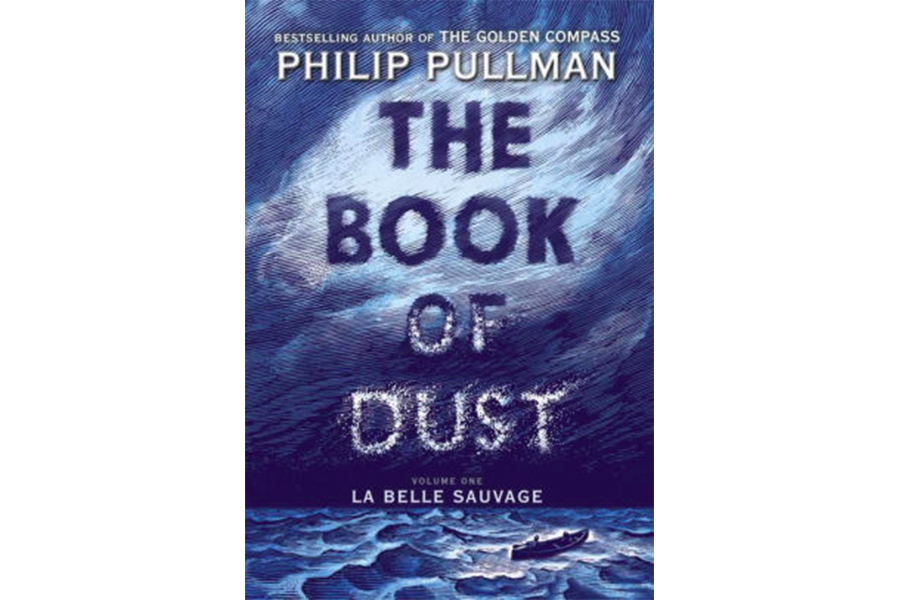'La Belle Sauvage' will be like coming home for Philip Pullman fans
Nearly 20 years after Philip Pullman published the final book in the “His Dark Materials” trilogy, he’s launched a companion series, known as “The Book of Dust.” The hotly anticipated first volume, La Belle Sauvage, is finally out, and the master storyteller has held nothing back.
Make no mistake, “The Book of Dust” will be darker than the original trilogy; The Guardian called the first book a “hellhound of twisted Gothic fantasy” in which “no reader, child or other, need be spared.” Pullman himself has jested that the new series should be called “His Darker Materials.”
Pullman’s books have always been controversial, and those offended by his questioning of religion will find “The Book of Dust” at least as troublesome.
The new series is neither prequel nor sequel, but rather an “equal.” Consider its status akin to that of the “Star Wars” film “Rogue One” as opposed to the “Harry Potter” book “The Tales of Beedle the Bard.”
Accordingly, we’re treated to a swath of new characters as well as returning favorites. The protagonist is 11-year-old Malcolm Polstead, the observant son of Oxford innkeepers. Together with his daemon, the inventive lad roams the Thames and nearby canals in his canoe, La Belle Sauvage.
When Malcolm hears rumors of a baby named Lyra hidden in the local priory, he investigates. The northern witches have prophesied that this child is “destined to put an end to destiny.” Given the strange things going on in Oxford, and the overt war between religion and science, this attracts a lot of attention.
Controversy rages over something called the Rusakov field and an elementary particle known as Dust. Scientists propose “the extraordinary idea that consciousness is a perfectly normal property of matter, like mass or anbaric charge; that there is a field of consciousness that pervades the entire universe, and that makes itself apparent most fully ... in human beings.”
The Rusakov field attempts to describe consciousness as a scientific property rather than a spiritual one – thus pitting scientists against the church in a fundamental struggle.
“The gist of it,” one character explains, “was that everything is material and that matter itself is conscious. There’s no need to bring spirit into the discussion.”
So when Lyra seems to be the answer to destiny itself, three separate groups attempt to retrieve her for their own purposes. These include Mrs. Coulter and a cadre of agents searching on behalf of the church, also known as the Magisterium; Gerard Bonneville, a deranged scientist and sex offender recently released from prison who seeks revenge against Mrs. Coulter, the star prosecutorial witness who put him in prison; and Oakley Street, a covert
anti-Magisterium group that seeks to protect both the baby and, more broadly, people’s ability to speak, think, and research freely.
As these dark, complex forces swirl, it begins to rain – and it doesn’t look to stop anytime soon. The rivers rise and dams across England threaten to crumple, unleashing a flood of biblical proportions.
It all has to break. When it does, buckle up and put the kettle on – this is a gripping, galloping ride, punctuated by moments alternately beautiful and surreal.
For fans who haven’t been near “His Dark Materials” for eons (no shame – “The Amber Spyglass” came out 17 years ago!), Pullman draws readers new and old into his world with a natural ease.
For longtime fans, among whom I count myself, reading about daemons, witches, and anbaric power is like coming home after almost 20 years abroad.
Pullman’s elegant, scholarly voice – his cutting dialogue and glorious visualizations – have been missing in my life. He wields English with the tender delicacy of a lover tucking a strand of hair behind his beloved’s ear.
His trademark soul-searching about physics and metaphysics, politics and academia, sin and knowledge, spirit and matter, rings out in the classic, complex way. For fans of the writer or his series, regardless of its intensity, “La Belle Sauvage” is essential.







